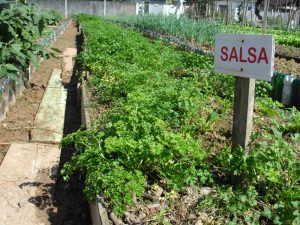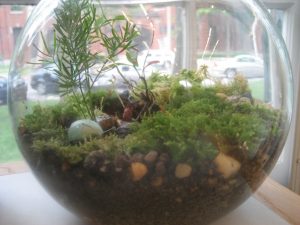Last Updated on December 15, 2023 by teamobn
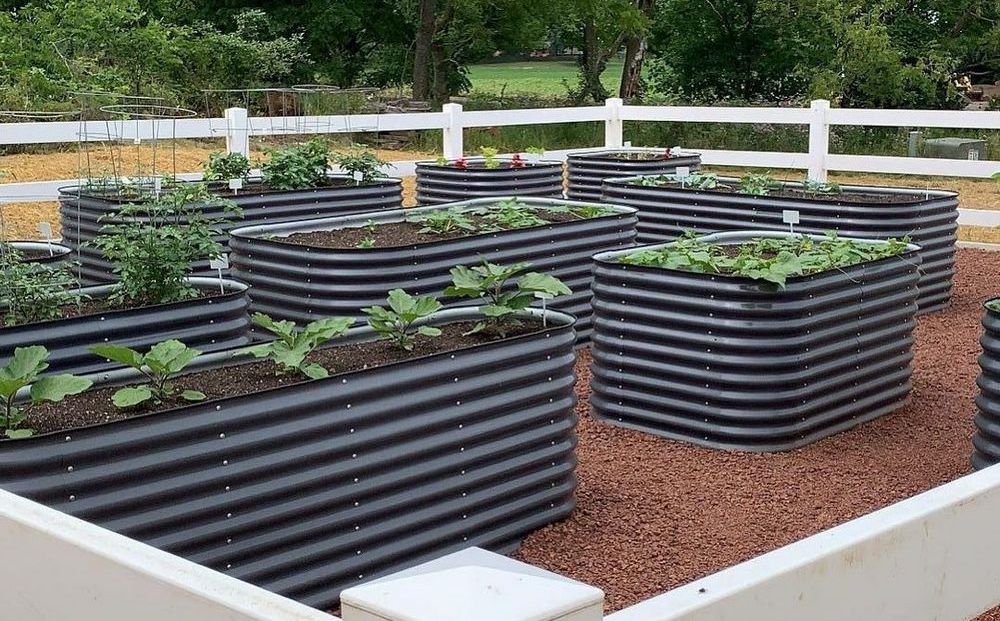
Raised garden beds transform gardening by giving you complete control over soil, drainage, and design. They make gardening accessible, efficient, and aesthetically pleasing. Whether you’re a seasoned gardener or a green-fingered newbie, mastering the raised garden bed layout and planning is crucial.
This article will guide you through the process, helping you create a garden that’s not only productive but also a feast for the eyes.
Understanding Raised Garden Beds
Contents
- 1 Understanding Raised Garden Beds
- 2 Types of Raised Garden Beds Materials
- 3 Site Selection and Preparation
- 4 Designing Your Raised Garden Bed Layout
- 5 Filling Your Raised Garden Beds
- 6 Irrigation and Maintenance
- 7 What to Plant on Your Raised Garden Bed
- 8 FAQ on Raised Garden Bed Layout and Planning
- 8.1 Why use raised garden beds instead of traditional gardens?
- 8.2 How do I choose the best location for my raised bed?
- 8.3 Can I set up a raised bed on a concrete or paved area?
- 8.4 How often should I replace or refresh the soil in my raised bed?
- 8.5 Is treated wood safe for raised beds?
- 8.6 Can I grow perennials in my raised garden bed?
- 8.7 Do raised beds require a lot of maintenance?
- 8.8 How do I control pests in my raised bed?
- 8.9 Can I use regular garden soil in my raised bed?
- 8.10 How do I ensure proper drainage for my raised garden bed?
- 9 Conclusion
Properly raised garden bed layout and planning elevate the gardening experience quite literally. They offer a structured approach to growing various plants, from flowers to vegetables. Let’s explore why these beds are beneficial and explore the dimensions that suit different plant needs.
Benefits of Raised Garden Beds
These beds offer a host of advantages. They promote good drainage, reduce soil compaction, and minimize the effort of bending and stretching. This makes gardening more accessible and enjoyable. Moreover, they create an optimal growing environment, leading to healthier plants and more bountiful harvests.
Ideal Dimensions
Size matters when it comes to raised garden bed layout. The height should allow for deep-rooted plants while being reachable from the sides. Typically, a height of 6 to 12 inches is common. Width is crucial, too. Keeping it around 3 to 4 feet ensures easy access to the center from either side. Length can vary but should match your garden’s size and shape.
By grasping these basics on raised garden bed layout, you lay the groundwork for a flourishing garden. With raised beds, you’re not just planting seeds but setting the stage for growth and success.
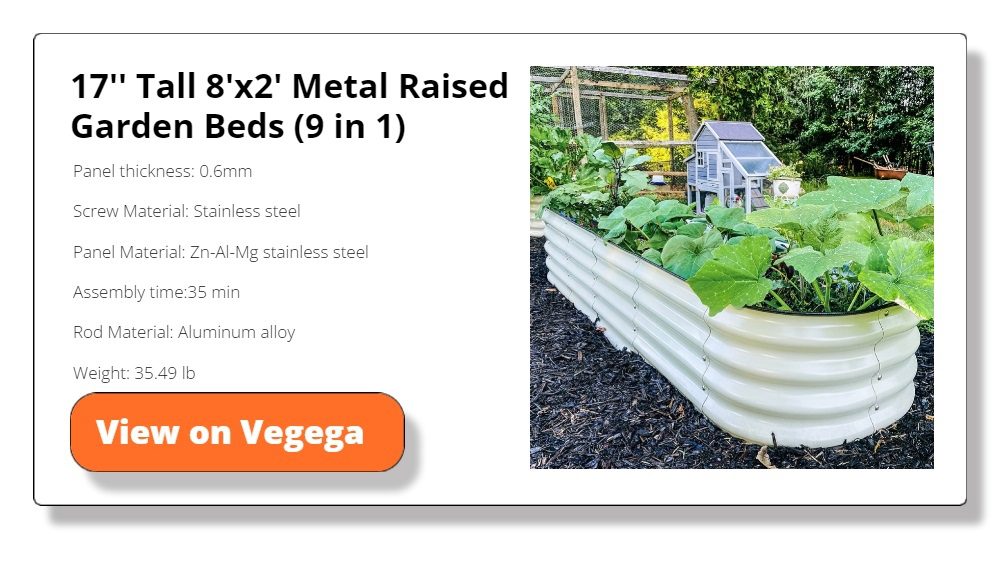
Types of Raised Garden Beds Materials
Choosing the right materials for your raised garden bed layout is like picking the foundation for a house. It’s a decision that shapes durability, maintenance, and style. Here’s a rundown of popular materials, each with its unique qualities.
Wood
Wood is a classic choice, offering natural beauty and a warm touch. Cedar and redwood are top picks for their resistance to rot and pests. Treated lumber is another option, but ensure it’s safe for edibles.
Stone and Brick
For a sturdy and timeless look, stone and brick are your allies. They withstand the elements and add a touch of elegance. However, they require more effort and skill to assemble.
Metal
Metal beds, especially galvanized raised garden bed layout, are gaining popularity. They’re long-lasting and have a modern vibe. Just keep an eye on heat absorption in sunny areas.
Plastic and Composite
These materials offer versatility and ease of assembly. They’re lightweight and come in various designs. Composite beds blend wood fibers and plastic, giving you the best of both worlds.
Each material has its story, with chapters on cost, lifespan, and maintenance. Your choice sets the stage for your garden’s personality and growth.
Site Selection and Preparation
Selecting the right spot for your raised garden bed layout is a pivotal decision. It’s not just about where your garden looks best but where it will thrive. Here’s how to pinpoint the perfect location and prepare it for planting.
Assessing Sunlight and Shade
Plants are like solar panels; they need sunlight to produce energy. Aim for a site with at least six to eight hours of direct sunlight daily. Observe your potential site throughout the day to gauge the light. Some shade is okay, especially in hotter climates, but too much can stunt growth.
Preparing the Site
Once you’ve chosen the spot, it’s time to prepare. Start with a clean slate by removing grass, weeds, and debris. Level the ground to prevent water pooling in one area. If your site has poor drainage or invasive roots, consider laying down a barrier like landscaping fabric. This foundation work is crucial for a prosperous garden.
With the right location and preparation, your raised garden bed layout have the best chance for success. It’s about creating harmony between the plants and their environment, setting the stage for a garden that grows and flourishes.
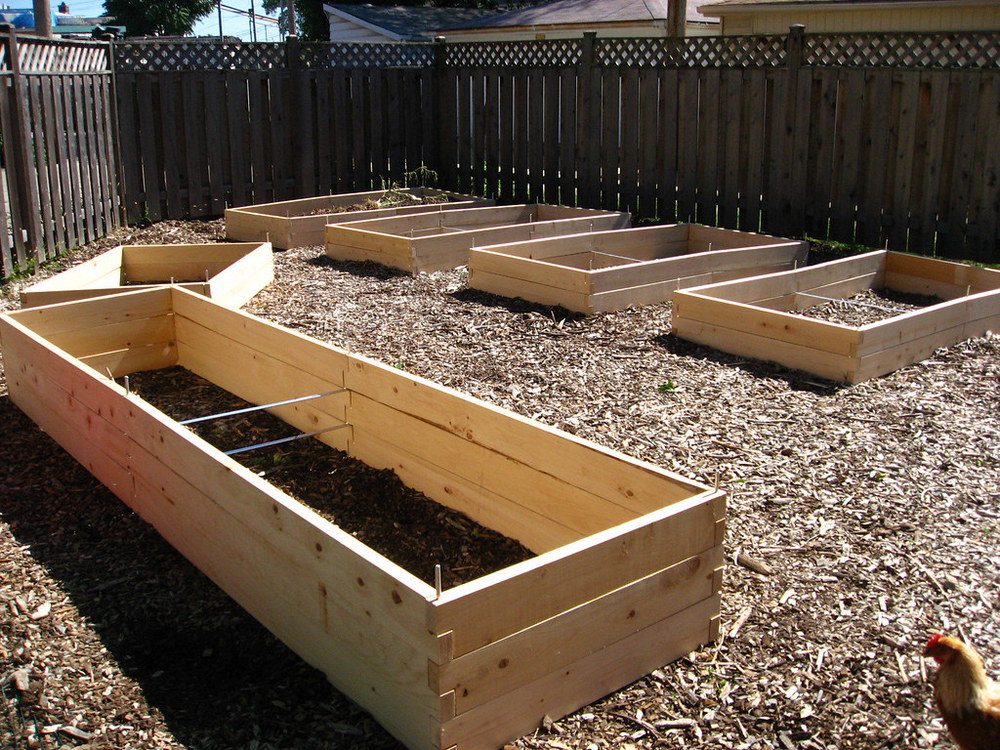
Designing Your Raised Garden Bed Layout
Designing the raised garden bed layout is both an art and a science. It’s about optimizing space while creating visual appeal. Here’s how to craft a raised garden bed layout that marries functionality with beauty.
Principles of Efficient Garden Design
Start with the basics: accessibility and sun exposure. Beds should be reachable from all sides, and tall plants shouldn’t shade smaller ones. Group plants with similar needs together to streamline care. Consider the mature size of plants to avoid overcrowding.
Incorporating Pathways and Accessibility
Pathways are the arteries of your garden, ensuring easy access for maintenance and harvesting. Aim for paths at least 18 inches wide for comfortable movement. Materials like mulch or gravel can distinguish pathways and suppress weeds.
Aesthetic Considerations
Your garden should be a feast for the eyes and the table. Create visual interest with varying bed heights or shapes. Use color and texture to draw the eye. Even in a vegetable garden, beauty has a place.
A well-designed layout not only maximizes growth but also creates a garden that’s a joy to inhabit. It’s a thoughtful arrangement of elements that fosters harmony between form and function.
Filling Your Raised Garden Beds
Filling your raised garden beds is more than just adding soil; it’s about creating a nurturing environment for your plants to flourish. Here’s how to build a foundation that will support your garden through every season.
Choosing the Right Soil Mix
The soil in your raised garden bed layout is like the foundation of a house—it needs to be strong and suitable for what you’re building. Unlike ground soil, you have complete control over the soil in your raised bed.
A mix of topsoil, compost, and either peat moss or coconut coir will provide a balanced, nutrient-rich environment. The topsoil offers structure, while compost brings in essential nutrients. Peat moss or coconut coir improves water retention. This combination creates a loose, fertile foundation that allows roots to grow freely.
Layering for Success
Layering your soil isn’t just about filling space; it’s a strategic approach to maximize your garden’s potential. Start with a layer of coarse material like gravel or broken pots at the bottom for drainage. Above this, a layer of sand can help regulate moisture.
Your main soil mix comes next, rich in organic matter. The topmost layer should be the finest, reserved for seeds and delicate roots. This layering ensures water moves efficiently and roots have the best environment at each growth stage.
The Role of Compost
Compost is the lifeblood of a fertile garden. It introduces beneficial microorganisms and nutrients essential for plant growth. Mix it generously into your soil, and top-dress your beds with fresh compost each season to replenish nutrients.
Soil Depth Considerations
The depth of soil in your beds should reflect the needs of your plants. Shallow-rooted greens may need only 6 inches, while deep-rooted vegetables like tomatoes will thrive with 12 inches or more. Adjust the soil depth accordingly to ensure your plants have room to grow.
By thoughtfully filling your raised beds, you’re laying the groundwork for a garden that’s resilient, productive, and healthy. This part is always essential to any raised garden bed layout and planning process.

Irrigation and Maintenance
Proper irrigation and maintenance are the pulse of a thriving raised garden bed. These practices ensure your plants get the care they need to grow strong and healthy. Below are maintenance tips to consider along with your raised garden bed layout.
Watering Systems for Raised Beds
Raised beds dry out faster than ground-level gardens, making efficient watering crucial. Drip irrigation systems are ideal, delivering water directly to the roots and minimizing waste. Soaker hoses are another effective option, especially for beds in rows. For smaller gardens, hand-watering can be therapeutic, but ensure you’re watering deeply enough to reach the roots.
Mulching for Moisture Retention
Mulch is a raised bed gardener’s ally. It conserves moisture, keeps roots cool, and deters weeds. Organic mulches like straw or wood chips add nutrients as they break down. Apply a layer around your plants, leaving space around the stems to prevent rot.
Regular Feeding and Soil Care
Raised beds can deplete nutrients quickly due to their productive nature. Regular feeding with organic fertilizers or compost tea can replenish these nutrients. Annually, refresh the beds with new compost to maintain soil health and fertility.
Pest and Disease Monitoring
The elevated design of raised beds can deter some pests, but vigilance is still key. Regularly inspect your plants for signs of pests or diseases. Early detection and natural interventions like neem oil or insecticidal soap can prevent larger infestations.
Consistent irrigation and maintenance create a robust foundation for your garden’s growth. With these practices, your raised beds will not only flourish but will also become a sustainable part of your outdoor space.

What to Plant on Your Raised Garden Bed
Choosing what to plant when considering your raised garden bed layout is like curating a masterpiece. The right mix of plants can yield a bountiful harvest and stunning visuals. Here’s a selection to inspire your green thumb.
Vegetables
Vegetables are the backbone of most raised garden bed layout. They not only provide sustenance but also bring life and color to your garden. Here’s a closer look at each of the recommended vegetables:
Tomatoes
Tomatoes are a favorite for their versatility and variety. They love the warm, well-draining conditions of raised beds. Provide sturdy supports for vining varieties, and enjoy a summer full of rich, homegrown flavor if you are incorporating it to your raised garden bed layout.
Carrots
Raised beds are perfect for root vegetables like carrots. The loose, deep soil allows them to grow straight and long. Sow carrot seeds directly and thin them as they grow for a bountiful harvest.
Lettuce
Lettuce and other leafy greens are ideal for raised garden bed layout, especially in the cooler months. They grow quickly and can be harvested leaf by leaf or all at once. Mix different varieties for a colorful salad bowl.
Peppers
From sweet bells to fiery chilies, peppers love the sun and warmth of space. These vegetables are a great addition to any raised garden bed layout. They require consistent moisture and benefit from staking as they grow. Peppers add a pop of color and flavor to any dish.
Radishes
Radishes are fast growers, making them a rewarding choice for a raised garden bed layout. They can be planted alongside slower-growing plants to maximize your space and yield. Their peppery bite is perfect for salads and garnishes.
Cucumbers
Cucumbers are prolific producers in the right conditions. They need ample space or a trellis to climb, but they’ll reward you with a steady supply of salads and pickling if you add them to your raised garden bed layout.
Each vegetable brings its unique needs and joys to the garden. In a raised bed, you can tailor the environment to suit them, resulting in healthier plants and a more abundant harvest.
Herbs
Herbs are practical and beautiful, making them a superb choice for a raised garden bed layout. They can be used for cooking, tea-making, or adding a fragrant touch to your garden. Here’s a brief overview of each recommended herb:
Basil
Basil is a warm-weather favorite for a raised garden bed layout, adored for its aromatic leaves that are a staple in many dishes. It thrives in full sun and requires regular watering. Pinch off flower buds to encourage bushier growth and more leaves for harvest.
Parsley
Parsley, with its lush green foliage, is both a culinary and decorative herb for any raised garden bed layout. It prefers cooler temperatures and consistent moisture. It’s biennial, meaning it grows for two seasons, providing fresh leaves for various dishes.
Cilantro
Cilantro, known as coriander, is loved for its fresh leaves and aromatic seeds. These are great to any raised garden bed layout. It’s a cool-season herb that can bolt quickly in heat, so consider planting in succession for a continuous supply.
Thyme
Thyme is a hardy, drought-tolerant herb with a robust flavor, perfect for a sunny spot in your raised bed. It’s a perennial, so it will provide aromatic leaves for years with minimal care.
Mint
Mint is vigorous and easy to grow but can be invasive. Its refreshing leaves are perfect for teas, desserts, and garnishes. Planting it in a raised bed can help contain its spread.
Rosemary
Rosemary is a woody perennial with needle-like leaves and a distinctive aroma. It prefers well-drained soil and plenty of sun. It’s drought-resistant once established and adds a savory depth to many dishes.
These herbs not only enhance your cooking but also bring texture, color, and fragrance to your raised garden bed layout. Their varied requirements and benefits make them an ideal mix for both novice and experienced gardeners.
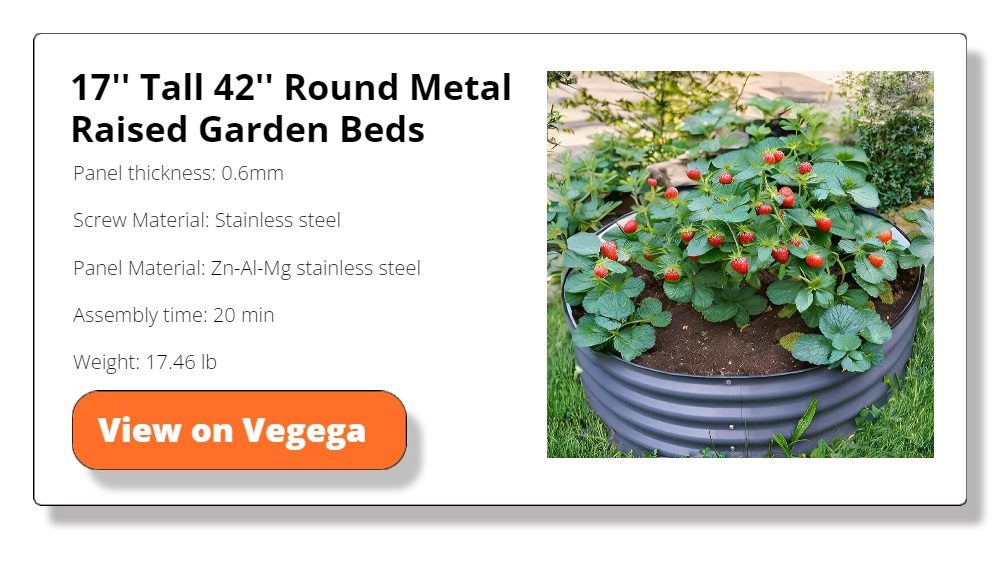
Flowers
Incorporating flowers into your raised garden bed layout not only adds beauty but can also attract beneficial insects and pollinators. Here’s a closer look at some flower varieties that thrive in raised beds:
Marigolds
Marigolds are hardy, vibrant flowers that are easy to grow in your raised garden bed layout. They’re known for repelling pests, making them excellent vegetable companions. With their bright oranges and yellows, they bring cheer to any garden.
Zinnias
Zinnias are a burst of color with their wide range of hues and impressive blooms. They attract butterflies and hummingbirds, adding life and movement to your raised garden bed layout. Zinnias prefer full sun and well-drained soil.
Sunflowers
Sunflowers are not only striking but also serve as a natural trellis for climbing plants. They can grow tall, so place them where they won’t shade other sun-loving plants. Their seeds also provide a tasty treat for birds.
Lavender
Lavender is beloved for its soothing fragrance and purple blooms. It’s a perennial that thrives in well-drained soil and full sun. Lavender can also deter deer and rabbits, protecting your other plants.
Nasturtiums
Nasturtiums offer both beauty and utility. Their flowers and leaves are edible, with a peppery flavor. They can help repel pests and are easy to grow, even in poorer soils.
Cosmos
Cosmos are delightful flowers with daisy-like blooms in pink, white, and purple. They’re easy to care for, drought-tolerant, and attract pollinators like bees and butterflies.
These flowers not only enhance the aesthetic of your raised garden bed but also support a healthy ecosystem. With their varied benefits and requirements, they can fit seamlessly into any garden plan.
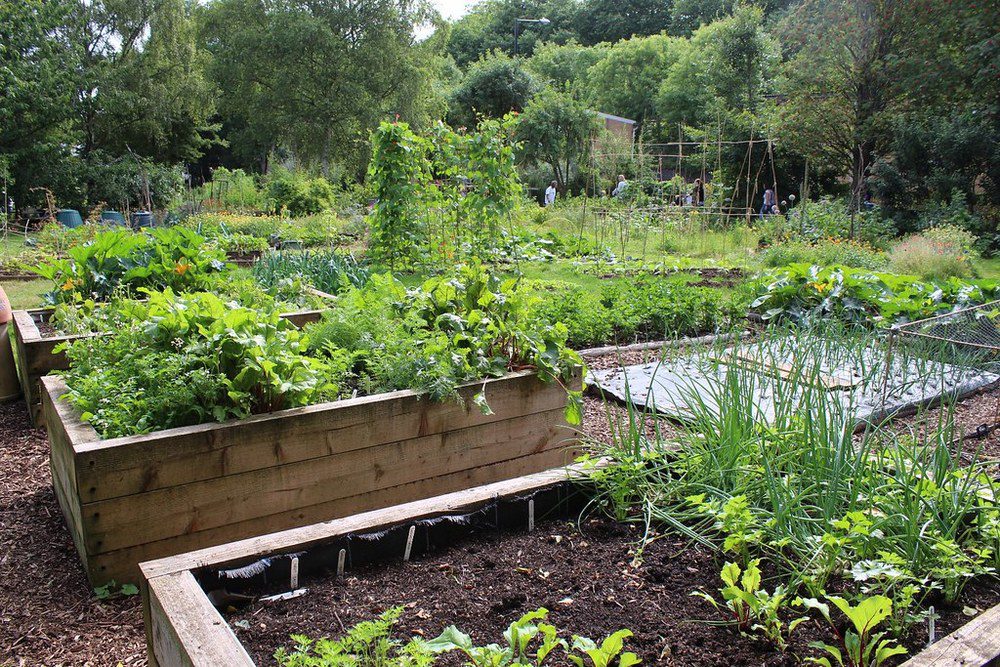
Fruits
Fruits can be a delightful addition to your raised garden beds, providing sweet treats and attracting wildlife. Here’s a closer look at each of the recommended fruits:
Strawberries
Strawberries are a favorite for their sweet, juicy berries and compact growth habit. They prefer well-drained soil and full sun. Planting strawberries in raised beds can help prevent rot and minimize pests.
Blueberries
Blueberries require acidic soil, which is easy to achieve in a raised bed. They are perennials, so with the right care, you’ll enjoy berries for years. Ensure they have full sun and consistent moisture for the best yield.
Raspberries
Raspberries are hardy and can thrive in raised beds with proper support for their canes. They like well-drained soil and full to partial sun. Planting in raised beds can help manage their spreading nature.
Dwarf Fruit Trees
Dwarf fruit trees are ideal for raised beds as they don’t require as much space as full-sized trees. Choose varieties like dwarf apples, peaches, or cherries. Ensure the bed is deep enough to accommodate their root systems and provide adequate support as they grow.
Growing fruits in your raised beds adds diversity to your garden and provides a sweet reward for your efforts. Each fruit has its unique needs, but the controlled environment of a raised bed can help meet these and yield bountiful harvests.
FAQ on Raised Garden Bed Layout and Planning
Why use raised garden beds instead of traditional gardens?
Raised garden beds offer better drainage soil control and can be easier on the back. They also warm up faster in the spring, extending your growing season.
How do I choose the best location for my raised bed?
Pick a spot with at least 6 to 8 hours of sunlight daily. Ensure it’s close to a water source and avoid areas where water pools.
Can I set up a raised bed on a concrete or paved area?
Raised beds can be set up on hard surfaces. Just ensure you have adequate depth for the plants you want to grow.
How often should I replace or refresh the soil in my raised bed?
It’s a good idea to add fresh compost or organic matter every year. If you notice reduced plant growth or health, consider replacing the soil mix after 2-3 years.
Is treated wood safe for raised beds?
Most modern treated woods are safe for garden beds. However, always check what chemicals were used in the treatment process.
Can I grow perennials in my raised garden bed?
Ensure your raised bed offers enough depth and protection for the plant’s needs. These needs include using the proper soil and adjusting its pH.
Do raised beds require a lot of maintenance?
Raised beds typically have fewer weeds and can be easier to manage than in-ground gardens. Regular watering, periodic soil amendments, and seasonal planting are the main tasks.
How do I control pests in my raised bed?
Watch for pests, use insect-repelling plants, or use natural or organic pest solutions. Mesh covers can also deter larger pests.
Can I use regular garden soil in my raised bed?
It’s better to mix topsoil, compost, and other organic matter. Regular garden soil can compact and may not offer the best nutrients.
How do I ensure proper drainage for my raised garden bed?
Layer the bottom with coarse materials and ensure your soil mix is loose and well-aerated. Avoid over-watering
Conclusion
Mastering the art of raised garden bed layout and planning is a journey of discovery, creativity, and connection with nature. From selecting the right materials and site to designing your raised garden bed layout and filling your beds with a rich tapestry of plants, each step is a building block towards a flourishing garden.
Raised beds offer an accessible and efficient way to garden, bringing the joys of cultivation to novices and seasoned gardeners alike. Embrace the process, and watch as your garden becomes a thriving ecosystem nourishing body and soul.
.


